Wishing you had more trees and birds on your property?
These warm spring months are a perfect time to plant trees, native plants, and shrubs that attract new birds to your yard!
While contemplating which trees and plants to add to your landscape, consider the available space in your yard or garden, and the amount of sun or shade it provides. First, we’ll look at some tree choice options, and then think about native plants.
Right tree, right place
“Right tree, right place” is a saying that reminds us to consider the needs of the tree vs. the planting site. Make sure any new trees you plant have adequate room for both roots, and crown. Contemplate sidewalks, asphalt, overhead power lines and proximity to buildings.
In short, allow for plenty of room for your new tree to grow and become a beautiful, mature and healthy tree.
Tree Planting Tips
The three most common tree planting errors are not digging a big enough hole, planting the tree too deeply, and improper mulching and watering.
First, dig the hole at least 2 feet wider than the size of the root system or root ball. Remove any burlap or ties, and make sure the roots are covered with soil that was removed from the hole. Take care not to plant your tree too deeply; instead, set it slightly above the level of the surrounding soil to allow for settling and increased soil draining. It is not necessary to fertilize a newly planted tree, but a deep watering will help get rid of air pockets and is essential.
Applying mulch is recommended. It helps prevent soil temperature and moisture fluctuations during summer months, and discourages weeds. Just don’t overdo it, because a tree’s roots need to breathe; adding a depth of 4 to 6 inches around the base of your tree is fine. Then, spread the mulch one to two feet out from the trunk, leaving a 3 to 4-inch ring around the base of your tree mulch-free.
Yard size and tree choices
Is your yard on the small side? No problem!
For confined spaces, consider a Pacific dogwood (Cornus nuttallii). Sapsuckers, woodpeckers, white-crowned sparrows and many other birds use dogwood for habitat. It prefers well-drained acidic soils; also, plant in part-shade where trunk will be shaded from sun. Regularly raking leaves and removing from site will help prevent anthracnose. These lovely native trees add interest to the garden year-round.
Japanese Snowbell (Styrax japonicas) and hawthorn are other good choices for small yards (note: while hawthorn are popular for their attractive flower clusters, they also bear sharp, woody thorns). Snowbell is an attractive non-native deciduous tree with fragrant white flowers, while Black hawthorn is a common and hardy Oregon native that attracts both birds and beneficial pollinators.
For medium-sized yards some good native tree choices include vine maple (Acer circinatum), Oregon crabapple (Malus fascia) and Bitter cherry (Prunus emerginata). Vine maple prefers shady areas and will reward you with some lovely color in the fall.
With its orange-red bark and glossy dark green oval-shaped leaves, Pacific madrone (Arbutus menziesii) is a beautiful tree choice. These trees like partial shade to full-sun and well-drained soils. They are sometimes prone to transplant shock, so read up on madrone before planting.
For larger yards
If you have a large yard, you are very fortunate and have many trees from which to choose. Trees that are native to Oregon make a great choice because these species will do the best job of attracting beneficial insects, bees, and other pollinators, giving a boost to the local ecosystem of your neighborhood.
A few suggestions? Three very good choices are Willamette Valley Ponderosa Pine, Western Red Cedar and Bigleaf Maple.
Willamette Valley Ponderosa Pine (Pinus ponderosa var. willamettensis)
Willamette Valley Pine is highly drought resistant and prefers well-drained soils. Birds that rely on it for food include the slender-billed nuthatch and Lewis’s woodpecker. Genetically distinct from Ponderosa pine found east of the Cascade Mountains, it’s easy to grow and can reach 150 feet or more in height. Plant in a weed-free location with plenty of room to grow, and water during hotter days of summer especially during the first year following planting.
Western Red Cedar (Thuja plicata)

Western Red Cedar has lovely aromatic foliage and provides habitat for chestnut backed chickadees, towhees, hairy woodpeckers, squirrels and hummingbirds. It provides great visual screening and can be planted in very large yards. Photo by Karan A. Rawlins, University of Georgia, Bugwood.org
This large native conifer has lovely aromatic foliage and fibrous red bark. An important wildlife tree in Oregon, it provides habitat for chestnut backed chickadees, towhees, yellow-bellied sapsuckers, hairy woodpeckers, squirrels, tree swallows and hummingbirds. Conifers stay green year-round, making this tree a good choice for screening and privacy.
To grow, select a very large site with plenty of area and overhead room. Plant in full sun to light shade, and mulch after planting. While this tree is fairly low-maintenance, during its first growing season it needs water at least weekly.
Northwest Indians used western red cedar’s inner bark to make mats and baskets, and its wood to make bowls and spoons. The power of the red cedar was said to be so strong, a person could receive strength by standing with his / her back to the tree.
Bigleaf Maple (Acer macrophyllum)
This is an easy-to-grow tree with yellow flowers in the spring that bees will flock to it early in the year. These handsome trees can reach 40 – 80 feet high and have a wide canopy, making them a great shade tree. They are not recommended for planting along city streets, where they can become problematic.
Plant in part-shade to full sun, and be sure to structurally prune while young to create just one dominant leader.
Native plants and flowering shrubs
Oregon’s native plants and shrubs are beautiful, often low-maintenance and once established, usually don’t need much water. They also provide habitat for pollinators, insects, birds and other wildlife.
Here are a few species that are both beautiful and beneficial to the environment.
Red-flowering currant (Ribes sanguineum)
This plant has become a favorite for many gardeners and nature enthusiasts. It’s attractive, low-maintenance, bears beautiful sprays of magenta flowers in the early spring and is a magnet for hummingbirds. You can use it as an informal hedge or as a specimen plant; it prefers part-to-full-sun, and well-drained soil.
Wild rose (Nootka rose)
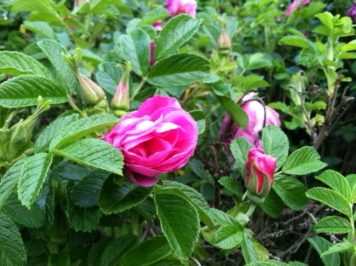
Nootka Rose is a reliable bloomer with lovely fragrance. It can send out runners, so plant in an area with plenty of room. Photo by Cynthia Orlando
This hardy shrub makes an easy addition to the landscape. It’s not only fragrant and lovely, it’s also beneficial to pollinators.
The reliable Nootka rose blooms from spring to mid-summer. It grows in part-shade to full-sun and can be pruned to stay within 3-4’ in height. When dried to make tea, the fruits (“hips”) are a great source of vitamin C and provide 8 times that of oranges. It can spread via underground rhizomes, so give it plenty of room.
Tall Oregon grape (Mahonia aquifolium)
Like our native salal, Tall Oregon grape is popular with landscapers because it is low-maintenance. It also features showy yellow flowers in spring. It’s an important early pollinator resource for hummingbirds as well as the state flower of Oregon.
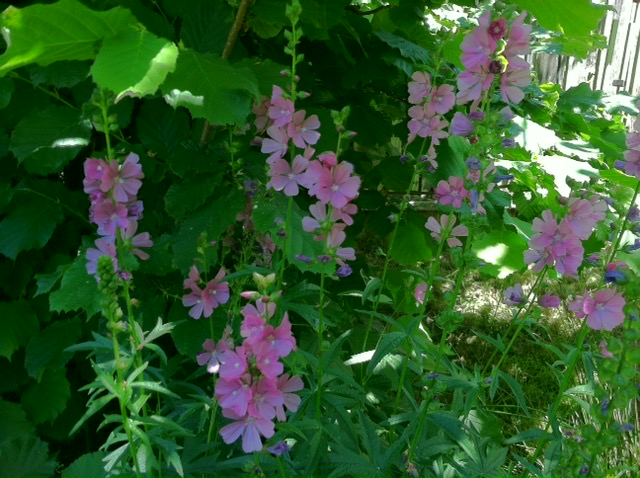
Bees and butterflies love Rose checker mallow, above. Photo by Cynthia Orlando
Rose checker mallow (Sidalcea malviflora ssp. virgata)
Lovely pink hollyhock-like flowers make this plant long-blooming plant a standout. It prefers part shade but will also grow in full sun, and is often visited by bees and butterflies. Remember to give it water during the hot days of summer.
Snowberry (Symphoricarpos albus)
This deciduous shrub with its white berries each winter makes it a great year-round addition. It’s excellent for pollinators and very easy to grow.
You can find most of these trees and plants at your local native plant nursery. Remember to read up on their specific needs before heading out so you’ll purchase just the right plants for your setting.
By adding native trees and shrubs to your yard or garden, you’ll not only help boost the population of native songbirds in you neighborhood, you’ll be enhancing the local ecosystem, too.
Happy planting!
- Two artists share songwriting insights - December 4, 2024
- 2023: An abundance of music to love - December 3, 2023
- Attract birds to your garden this fall and winter - September 29, 2023


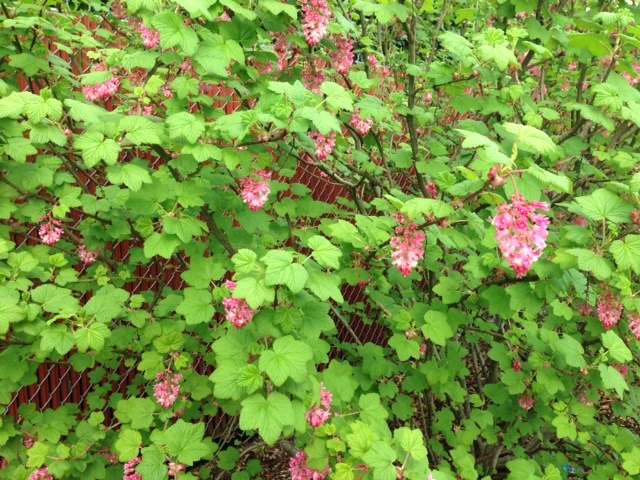
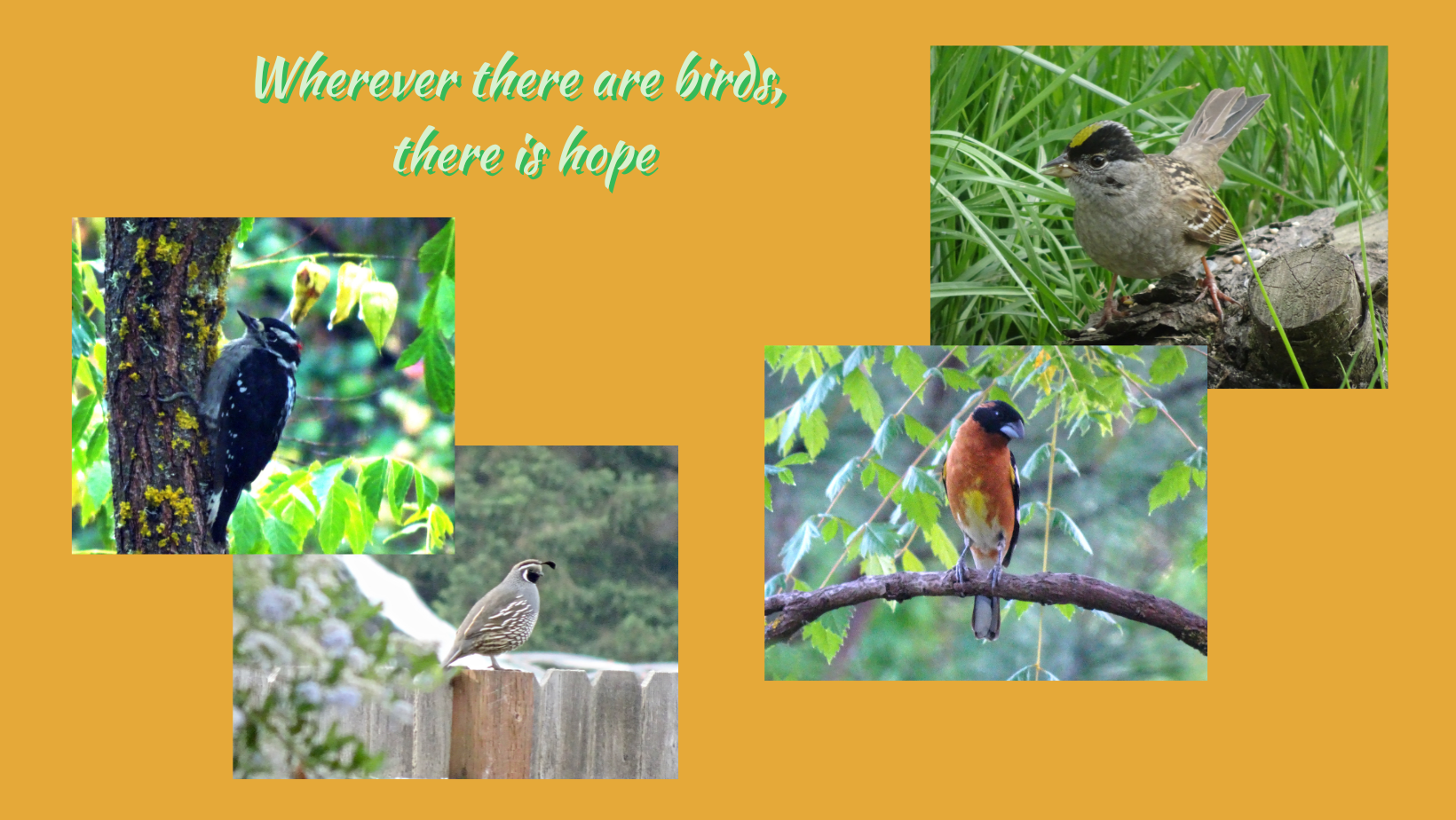
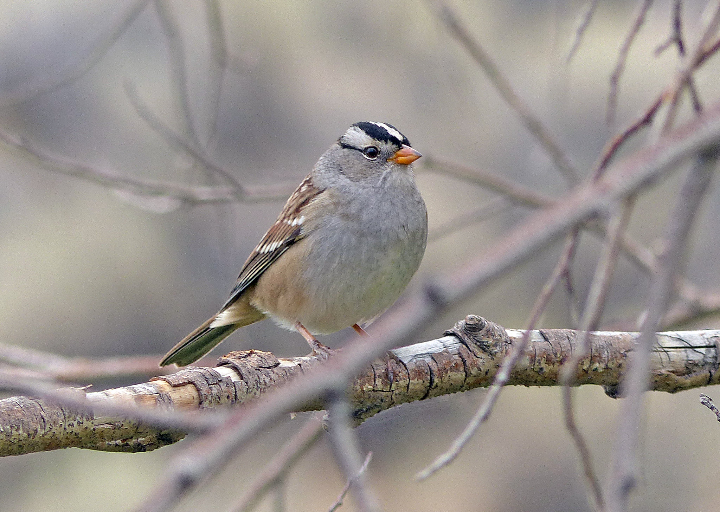

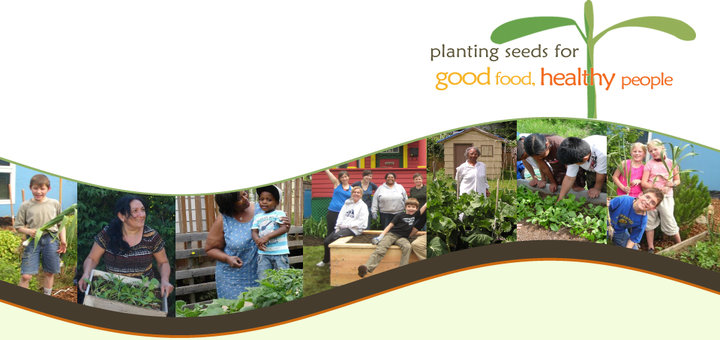
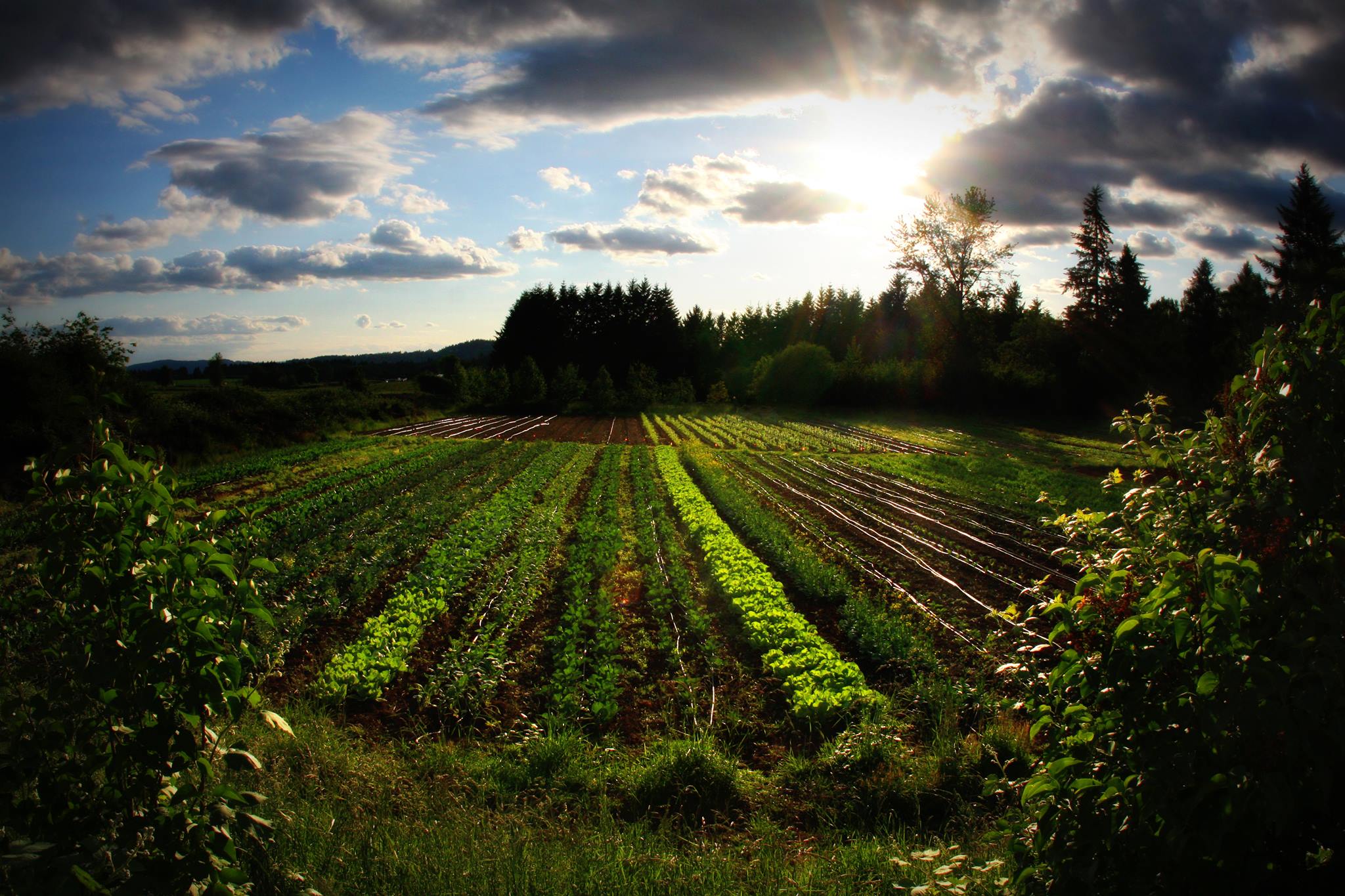

[…] love the month of May. Our staff pulled together a list of native plants, plants that attract pollinators, and invasive plants. This is the season when the magic happens […]